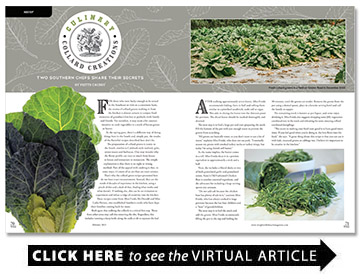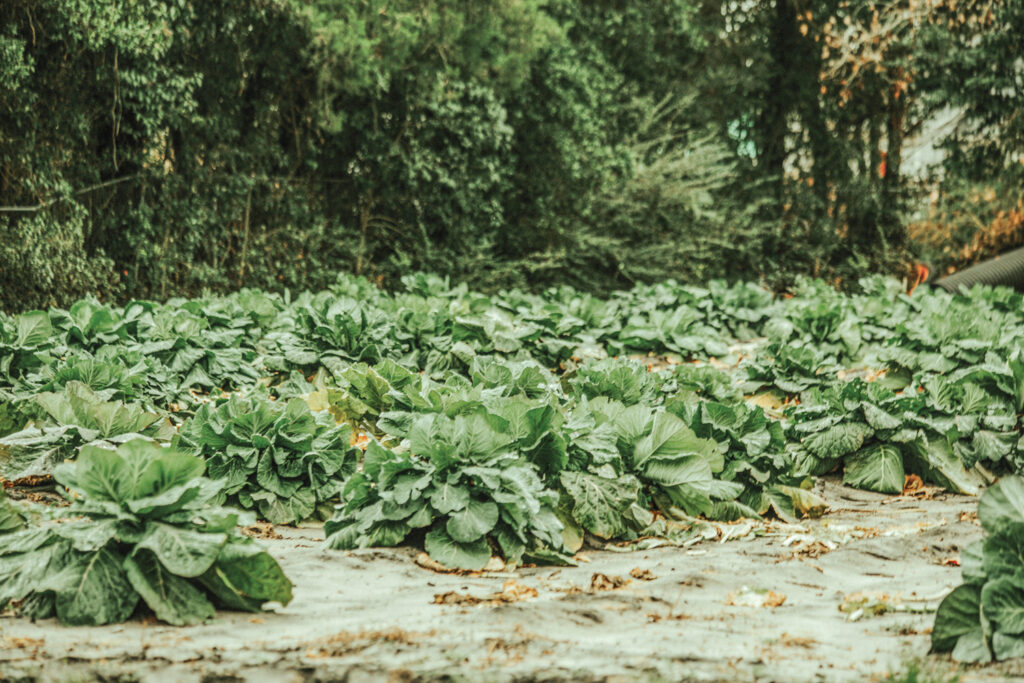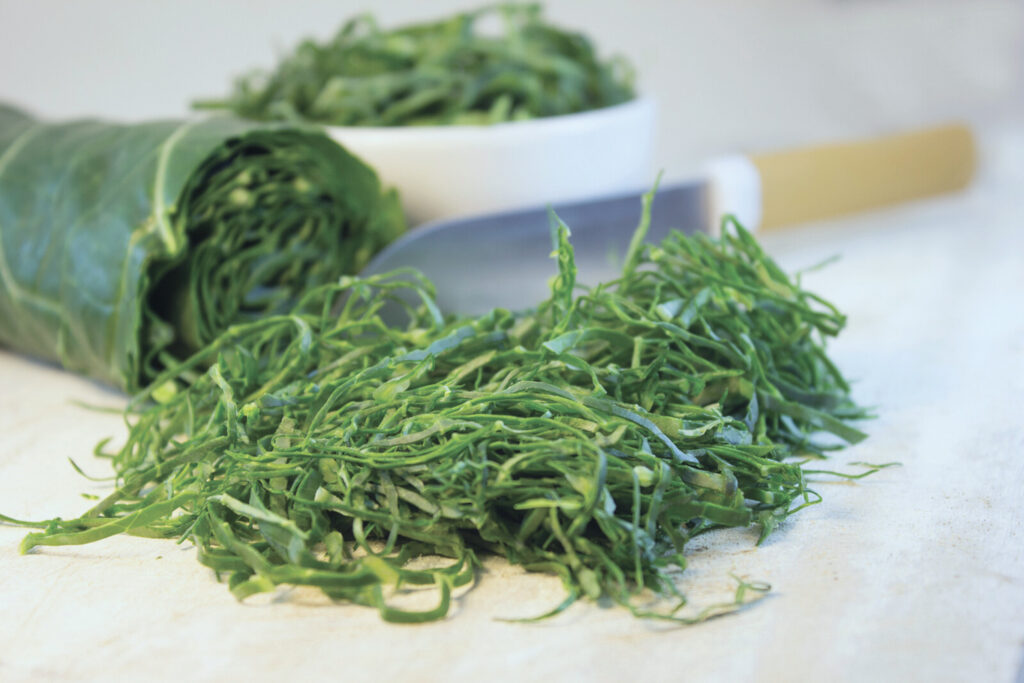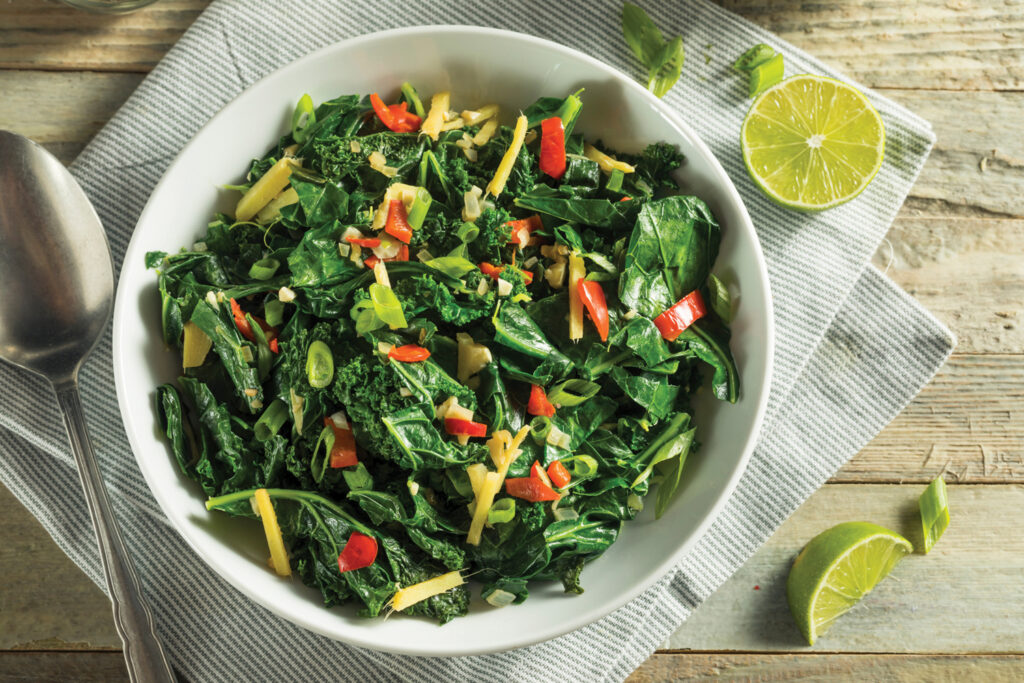Culinary Collard Creations
Two Southern chefs share their secrets
BY Fritts Causby
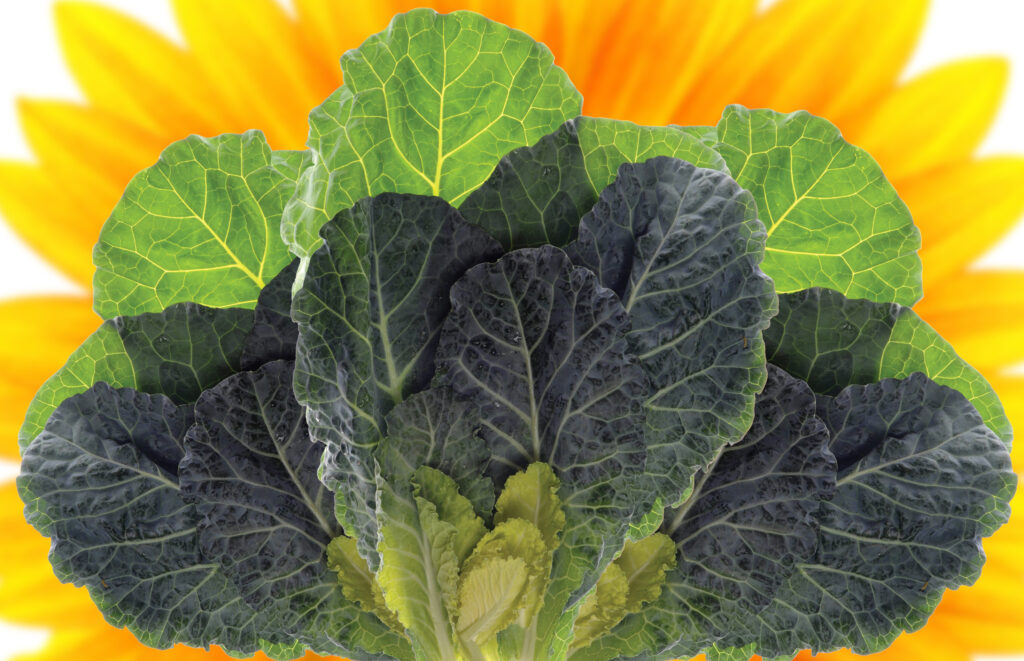
For those who were lucky enough to be raised in the Southeast or visit on a consistent basis, the aroma of collard greens wafting in from the kitchen is almost certain to conjure fond memories of grandma’s kitchen or potlucks with family and friends. For outsiders, it may seem a bit counterintuitive to cook vegetables in a stock of bacon grease or butter.
As the saying goes, there’s a different way of doing things here in the South and, simply put, the results of the flavorful recipes described here don’t lie.
The preparation of collard greens is iconic to the South, similar to Calabash-style seafood, grits, oyster roasts and barbecue. One may wonder why the flavor profile can vary so much from house to house and restaurant to restaurant. The simple explanation is that there is no right or wrong method. Part of the appeal with cooking is that, in some ways, it’s more of an art than an exact science.
That’s why the collard green recipes presented here do not have exact measurements. Instead, they are the result of decades of experience in the kitchen, using a pinch of this and a dash of that, finding what works and what doesn’t. If nothing else, this can be an invitation to experiment and infuse a tidge of creativity into the kitchen.
These recipes come from Miss Freida McDonald and Miss Lydia Heines, two established Southern cooks who have kept their families coming back for more.
Both agree that stalking the collards is a critical first step. Those from other areas may call this removing the ribs. Regardless, this includes running a sharp knife along the stalk or rib to separate the leaf.
Miss Freida McDonald
After stalking approximately seven leaves, Miss Freida recommends folding them in half and rolling them similar to a pinwheel sandwich, sushi roll or cigar. This aids in slicing the leaves into the thinnest possible portions. The sliced leaves should be washed thoroughly and drained.
The next step is to find a large pot and start preparing the stock. Fill the bottom of the pot with just enough water to prevent the greens from scorching.
“All greens are basically water, so you don’t want to use a lot of water,” explains Miss Freida, who does not eat pork. “I normally season my greens with smoked turkey necks or turkey wings, but today I’m using Amish roll butter.”
As the name implies, the butter comes in a roll. Miss Freida slices it in a portion equivalent to approximately a stick and a half.
Next, she includes a liberal shake or two of both granulated garlic and granulated onion. Anne’s Old Fashioned Chicken Base is another essential ingredient, and she advocates for including a large serving spoon-size amount.
“Do not add salt because the chicken base has plenty of salt in it,” cautions Miss Freida, who has always cooked in large portions because she has four children and a “host” of grandchildren.
The next step is to boil the stock and add the greens. Miss Freida recommends filling the pot to the top and boiling for 30 minutes, until the greens are tender. Remove the greens from the pot using a slotted spoon, place in a favorite serving bowl and call the family to supper.
The remaining stock is known as pot liquor, and some enjoy drinking it. Miss Freida also suggests dropping some Jiffy vegetarian cornbread mix in the stock and reheating for some amazing collard cornbread dumplings.
“The secret to making your food taste good is to have good intentions. If you feel good when you’re doing it, the love flows into the food,” she says. “A great thing about this recipe is that you can use it with kale, mustard greens or cabbage too. I believe it’s important to be creative in the kitchen.”
Miss Lydia Heines
Miss Lydia Heines’ recipe is not as vegetarian-friendly, though it too brings rave reviews.
“I don’t know why people think mine are so good, except I do use a whole lot of bacon grease. I guess you could say bacon grease is the secret,” she laughs.
The process begins, naturally, by making a pan of bacon. To create her stock, Miss Lydia starts by placing a ham hock into a pot of chicken stock, cut with a little bit of water. She adds chopped Vidalia onion and the bacon grease to get everything stewing together.
She also incorporates a little Worcestershire sauce and a little apple cider vinegar, along with about a half a clove of chopped garlic, before adding the collards. Other additions Miss Lydia includes in her stock are Old Bay seasoning, salt and pepper, and a little sugar.
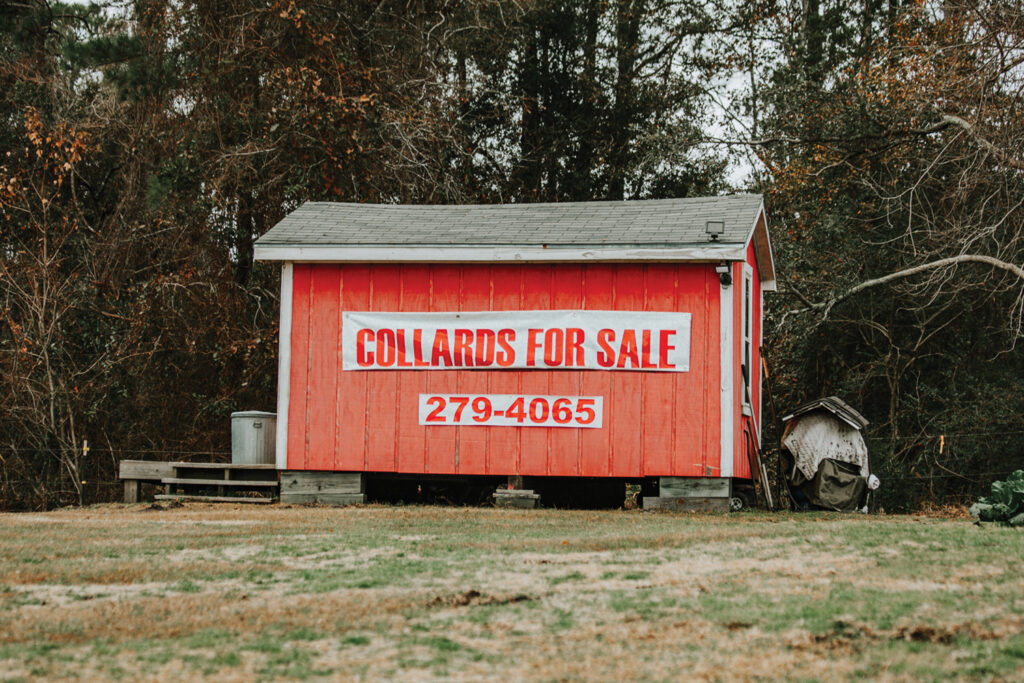
“I’ve got some secret spice rubs that people make and give to me, so I put some of that in there too,” she says. “And like I said, a lot of bacon grease. When I say a lot, I mean at least a half a cup or more, depending on how much you’re cooking.”
She credits her deceased father-in-law, who owned the Miljo Drive-In on Oleander, for teaching her how to prepare collards.
“He was a home cook and taught me how to trim the collards and put them into the pot,” she says. “He had nothing to do with the stock I make, but he showed me how to trim the collards and cut them up properly.”
Miss Lydia boils the collards for around 20 to 30 minutes until they are dark green. She then lets them sit to soak up all the flavor of the stock. When they have cooled, she removes them from the pot for another round of chopping, to ensure they are fork ready. She also takes the ham hock out, trims the fat, and shreds the remaining portions of meat.
While the collards are out, she squeezes them and uses a paper towel to remove some of the remaining water.
“A lot of people don’t want them to be swimming, but it really just depends on how you want to eat them,” she says.
She places the stock to the side for use as a base for chicken and vegetable soup. The final step is to place the collards and ham hock pieces into a serving bowl.
“Collards are good for you, and they keep for a pretty long time. I like to make a big batch so I can freeze them and have them on hand,” she says.
Bacon grease may impact the health benefits somewhat, but collards include a range of beneficial vitamins and minerals including vitamins A, K, B-6, C and calcium. They can also be a good source of iron, niacin, pantothenic acid, thiamin, choline and magnesium.
With the idea in mind that there is no such thing as a right or wrong answer in the kitchen, it’s worth noting that in other areas it is not uncommon to sauté collards in a stock of olive oil, garlic and onions. Some even like them raw in a salad or infused into a smoothie.
An especially mouth-watering idea involves tossing collard leaves in olive oil, and then baking at 275 degrees for 30 minutes. After they are done, sprinkle with curry, red pepper flakes, garlic powder, cumin and/or chili powder, and the result is a portable, healthy snack that is ready for any occasion.
Bon appetite, y’all.
